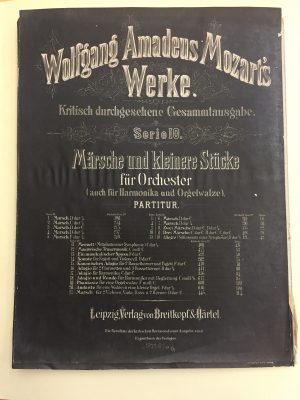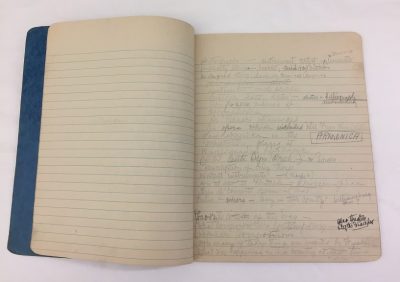This post comes from Alaina McNeal, the Public Services Outreach intern at the Rakow Research Library.

Photograph of Virginia Sturm from the
Virginia Sturm research collection on the
glass harmonica, CMGL 78099.
Musical instruments aren’t always the first thing that springs to mind when considering glass. People might be familiar with the use of wine glasses, tuned with water, as musical glasses. The glass harmonica, invented by Benjamin Franklin in 1762, may be less familiar. The instrument was created using tuned glass bowls arranged in a long, horizontal tube configuration. Musicians would play the instrument by wetting their fingers and running it along the bowls. Artists such as Wolfgang Amadeus Mozart and Ludwig van Beethoven were intrigued by the instrument, and composed pieces featuring the glass harmonica.
However, the glass harmonica’s popularity was mostly a fad, falling into obscurity not long after the 18th century. The instrument, with it’s strange, humming noises and the lead content of the glass, was reported to cause madness and potential death – a rumor that didn’t help with the instrument’s popularity. The glass harmonica fell into relative obscurity for years. Many years later, Virginia Sturm (1893-1977) began to collect documents about this strange instrument.

Virginia Sturm plays the glass harmonica from the Virginia Sturm research collection on the glass harmonica, CMGL 78099.
Sturm was not only a glass harmonica aficionado, but also a music editor, critic, writer, researcher, lecturer, and performer. She researched the instrument in depth, collecting sheet music featuring the instrument, and even books on Benjamin Franklin. Sturm added a glass harmonica made between 1818 and 1830 to her collection, performing the instrument during recitals and lectures. That very glass harmonica is now a part of The Corning Museum of Glass’s collection and is currently on display. The Rakow Research Library is lucky enough to be the home of Sturm’s extensive archival collection, which spans five boxes of materials, including her research, documents, and notes.
- “Marche und Kleinere Stucke fur Orchester,” title page, Wolfgang Amadeus Mozart, circa 1883.
- One of Sturm’s multiple notebooks featuring research on the glass harmonica from the Virginia Sturm research collection on the glass harmonica, CMGL 78099.
It was a thrill to browse through these boxes, some containing folder after folder of music scores, photographs, and research notes from Sturm. They were weighty and full of history. Inside, I looked through dozens of documents that gave me insight into Sturm’s world. I could get lost in the notes and musical arrangements, along with Sturm’s edits and reviews from the Dayton Daily News.
There’s always something special about getting insight into someone’s life through their comments scrawled in the margins of rough drafts. Her edits are specific, adding depth and imagery to the glass harmonica’s features. Some phrases stand out to me: “forty-two bowls of extreme fragility” and “sent to Bohemia where it was blown by artisans long since dead – leaving no trace of the exact dimensions.” To me, they show Sturm’s dedication and passion for the instrument, wanting to get the details just right for any reader out there learning about the instrument.
If you get a chance, browse the Rakow Research Library’s collection – online or in person – for a look into the fascinating archive Virginia Sturm built for the glass harmonica.
Learn more about the glass harmonica.
The Rakow Research Library is open to the public 9 am to 5 pm every day. We encourage everyone to explore our collections in person or online. If you have questions or need help with your research, please use our Ask a Glass Question service.


